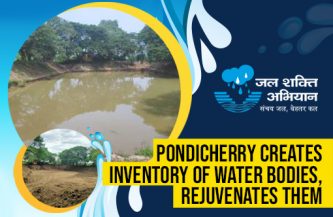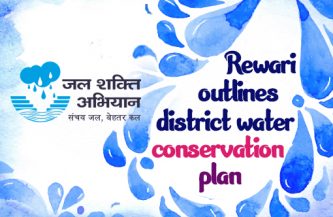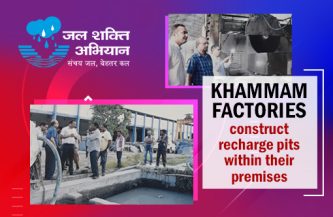Dry converted wet rice cultivation – an affordable alternative

The district administration of Khammam in Telangana, in association with scientists of Krishi Vigyan Kendra (KVK) in Wyra have recommended the use of dry converted wet rice as an alternative method to transplanted rice to overcome shortage of water and labour scarcity.

Farmers have started showing interest in this method as it does not require water and labour when it comes to nursery raising, pulling, transporting seedlings and transplanting; as seeds are directly sown using seed drill/ broadcasting on a well leveled field, explained District Collector, Mr. Sri. R. V. Karnan.
They can now prepare the land and sow the rice seeds by taking advantage of early showers of monsoon and raise the crop.
In Khammam district, under conditions of late onset of monsoon and insufficient water in barrages, water supply may become erratic and untimely, leading to delayed transplanting. Further, owing to deficit monsoon, and delayed and limited release of water from reservoirs, farmers do not get sufficient water at right time; and it is imperative for them to complete transplanting within a short time of water availability.
In light of the above issues, rice growers have been increasingly facing water crisis for traditional rice cultivation and challenges pertaining to increasing labour cost.
Transplanting of rice entails, adequate land preparation both for nursery and main field, the process consuming 20% of the total water requirement/ha (1240 mm). It also requires 25 to 30 man days for manual establishment of the same, depending on soil type.
Sensing the alarming situation of rainfall vagaries, delayed and limited release of water from canals Krishi Vigyan Kendra, Wyra assessed the performance of dry converted wet rice cultivation as an alternative to the conventional method of transplanted rice which could avoid the present day condition to some extent and cultivation of paddy can be carried out at an affordable cost.
With the onset of monsoon, when the water bodies like canals, tanks, rivers, reservoirs get filled with water and when the water is available for paddy cultivation farmers convert it into flooded rice; thus this method has the advantage of saving time (around two months) without any delay in paddy cultivation.
Compared to transplanted method in dry converted wet rice method about 30% of water can be saved and the crop matures 7-10 days earlier.

In Khammam district, presently the area occupied for paddy cultivation is more than 7000 ha. Of late, the area under dry converted wet rice is also gaining importance and is being practiced in Jal shakthi blocks with the active involvement of the district administration and farmers. In future under rice cultivated areas, dry converted wet rice (semi dry rice) is one of the best options to save water, time and labour.
Recently, training programmes and exposure visits were organised for the farmers to acquaint of the technology. Success achieved by other farmers was shown as example to enhance their interest.
The District Collector, Sri. R V Karnan visited dry converted paddy fields along with officials of the Department of Agriculture and Scientists of KVK, Wyra and highlighted the practice. Owing to regular visits and media coverage, paddy farmers have opined that this practice is going to help them immensely.
In all the Jal Shakthi blocks, KVK Melas are being held regularly at Gram Panchayat Level with active involvement of officials of various departments and KVK Scientists for giving timely suggestions on climatic scenario, water conservation and cultivation of crops.
[ The Blog was first published on https://jalshakti.wordpress.com/ ]





